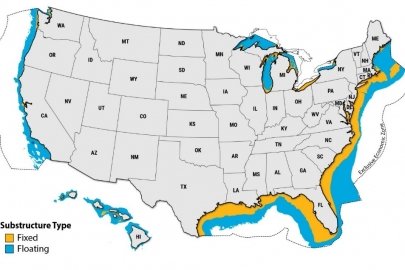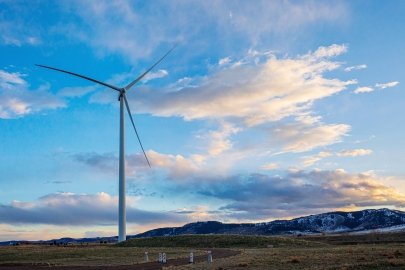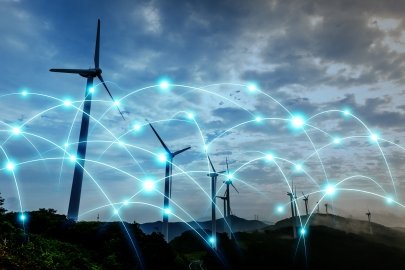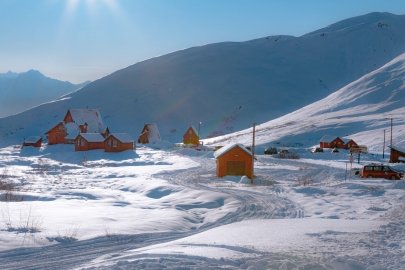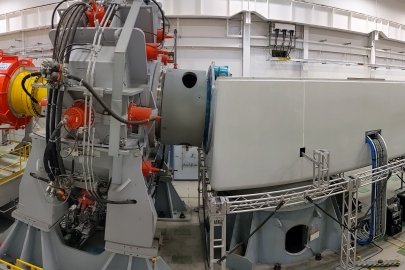A Pacific Northwest National Laboratory researcher discusses her past as a software engineer and NASA contractor, her current efforts in wind energy ecology and environmental sustainability, and her advice for those who aspire to work in renewable energy.
Wind Energy Technologies Office
May 8, 2023This article is part of the
SPRING 2023 R&D NEWSLETTER
In This Issue
Sometimes, you have to wait for the rest of the world to catch up with your vision.
Shari Matzner had been intrigued by computers and computer programming from an early age, but in the 1980s, while Matzner was earning her bachelor’s degree, computer science as an academic discipline was still in its early stages.
“I always loved math, so I got a Bachelor of Science in mathematics. I also took a lot of programming and computer architecture courses—what we now call computer science classes,” Matzner recalled.
After college, Matzner built a career as a software engineer in the private sector and, eventually, as a contractor at NASA. There, she spent a decade developing systems and training simulators for the International Space Station, as well as software to support experiments aboard several Space Shuttle missions.
But she didn’t stop there.
“I’ve always had a healthy curiosity about a lot of different things, and I always wanted to go back to school,” said Matzner. “And so, even though, by then, I was in my 40s and really didn’t know what I was getting myself into, I went back to school and got my Ph.D.”
That decision led Matzner to a new career as a senior research engineer at the U.S. Department of Energy’s (DOE) Pacific Northwest National Laboratory (PNNL). In her current role, Matzner combines her software engineering and computer science knowledge to develop technology that helps wind turbines coexist with wildlife. The following is a conversation with Matzner about her past successes, her future moves, and her advice for those who aspire to work in renewable energy.
Before coming to PNNL, you had a career as a software engineer in the private sector and later as a NASA contractor. What led you to your current role at PNNL?
At the time that I was considering an advanced degree, I was living in Portland, Oregon. I wanted to stay local, so I browsed through the offerings at Portland State University and found a multidisciplinary program called Systems Science that combined math and computer science.
I also found an advisor who was a huge influence on my professional career and a wonderful mentor to me. She introduced me to some PNNL researchers who were looking at underwater acoustic signals. Through that introduction, I got an internship at PNNL, which turned into a full-time research position, and I’ve been here ever since.
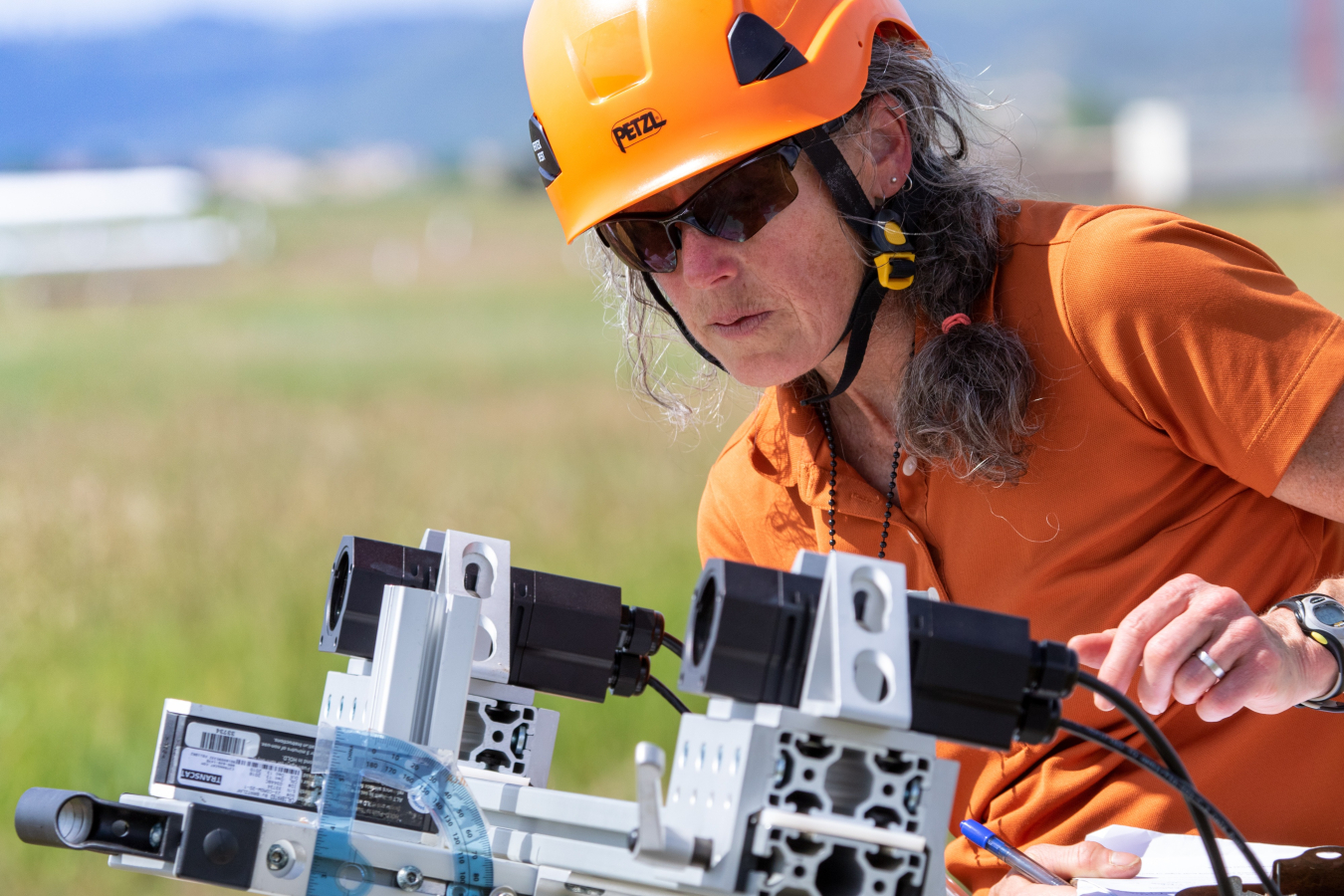
Pacific Northwest National Laboratory’s Shari Matzner develops cameras and software that help wind turbines coexist with wildlife.
What a great success story! What do you love about your work?
I love research, so being at PNNL is a great fit. It gave me an opportunity to interact with people who were working in a lot of different fields and topic areas. That’s one of the benefits of working at a national lab, especially if you’re early in your career; there are so many opportunities to explore and find the best match for your strengths and interests.
For me, there was a need for both my software programming skills and my signal processing skills. I was invited to collaborate with an ecologist to develop a technology for tracking birds. The ecologist was the subject matter expert on bird behavior, and I was the engineer who could create the technology. That technology became the ThermalTracker system, which has been the main focus of my career at PNNL.
What is ThermalTracker, and why has it been so central to your career?
ThermalTracker is a stereo-vision thermal camera system used to monitor the flight activity of birds and bats at land-based and offshore wind farm sites. It collects year-round, real-time data that can help offshore wind farm developers and operators determine whether birds and bats are flying at heights that put them at risk of colliding with wind turbine blades. Those data can then inform the strategies developers and operators use to minimize the wind farm’s impact on area wildlife. For example, based on ThermalTracker’s data, a developer might decide to look at a different wind farm site, or an operator might decide to curtail, or slow down, turbine blades when birds and bats are present or likely to be present.
ThermalTracker has been central to my career because I care deeply about living more sustainably on our planet, and renewable energy is a way to do that. It feels good to know my work is supporting renewable energy deployment.
Still, as renewable energy advances, it’s important to make sure we’re not creating other problems. For example, wind energy generates electricity without putting carbon into the atmosphere, but constructing and operating wind turbines can still impact wildlife and the surrounding ecosystem. Knowing that, I felt passionate about using my skills and training to develop technology that can help wind energy coexist with wildlife.
Sounds like a helpful invention! What’s next for ThermalTracker?
I’ve been working on the latest phase of ThermalTracker—now called ThermalTracker-3D—for several years. It has progressed from a simple app that ran on a computer to a system that runs in real time and provides more detailed information about the flight tracks of birds and bats.
We call it ThermalTracker-3D because it uses stereo vision, which means the system consists of a pair of cameras. This is an important evolution from the original system, which was just a single camera. With a single camera, we couldn’t tell if the camera was showing a large bird far away or a small bird up close. The stereo vision system works in the same way that we see with two eyes: it allows us to triangulate on an object to determine where it is in three-dimensional space.
This allows us to look at the three-dimensional flight paths of birds and bats, which is important because, in the context of understanding the effects of wind turbines on these animals, you want to know: How are they moving through space? Are they flying at heights that put them at risk of colliding with turbine blades? Are they able to avoid the blades? And if so, how? So all that information is available in the 3D flight tracks.
As U.S. offshore wind development ramps up, we’re starting to see more interest in wildlife impact mitigation technology. It’s a good feeling to know that the technology we’ve been developing will help the industry move forward.
Sounds like you’re making an important contribution with this work. Can you talk about the moment you realized you were on the right career path?
Going from ThermalTracker’s single camera to stereo vision was a moment when I felt like, “Wow, we’re really on to something here. This is going to be so useful.”
Not only that—we got the technology patented. Plenty of researchers at DOE’s national labs have multiple patents, and I just have that one, but it was wonderful to feel the satisfaction of inventing something that will advance the wind energy industry. It gave me the motivation to keep going on this path.
I’m also mentoring some junior early-career staff. It’s exciting to help train the next generation of wind and renewable energy researchers to understand the ecological concerns, to know what questions need to be answered, and to come up with technical solutions.
On that topic, what advice do you have for someone interested in working in wind and renewable energy?
First, I would say, “Go for it!” Land-based wind is a well-established sector and will continue to grow, but also think about offshore wind because that's where the biggest innovations are happening right now.
Second, there are so many different aspects to wind energy: mechanical engineering, electrical engineering, programming, environmental science, atmospheric science, and more. Keep an open mind, explore different areas of wind energy, and find what really resonates with you.
As I was reminded when ThermalTracker got patented, wind energy and renewables in general are rapidly evolving fields, and there’s lots of room to be inventive and make an impact, which can be very fulfilling.
Subscribe to the WETO e-newsletter to stay informed on the latest wind energy news, events, publications, and updates.


